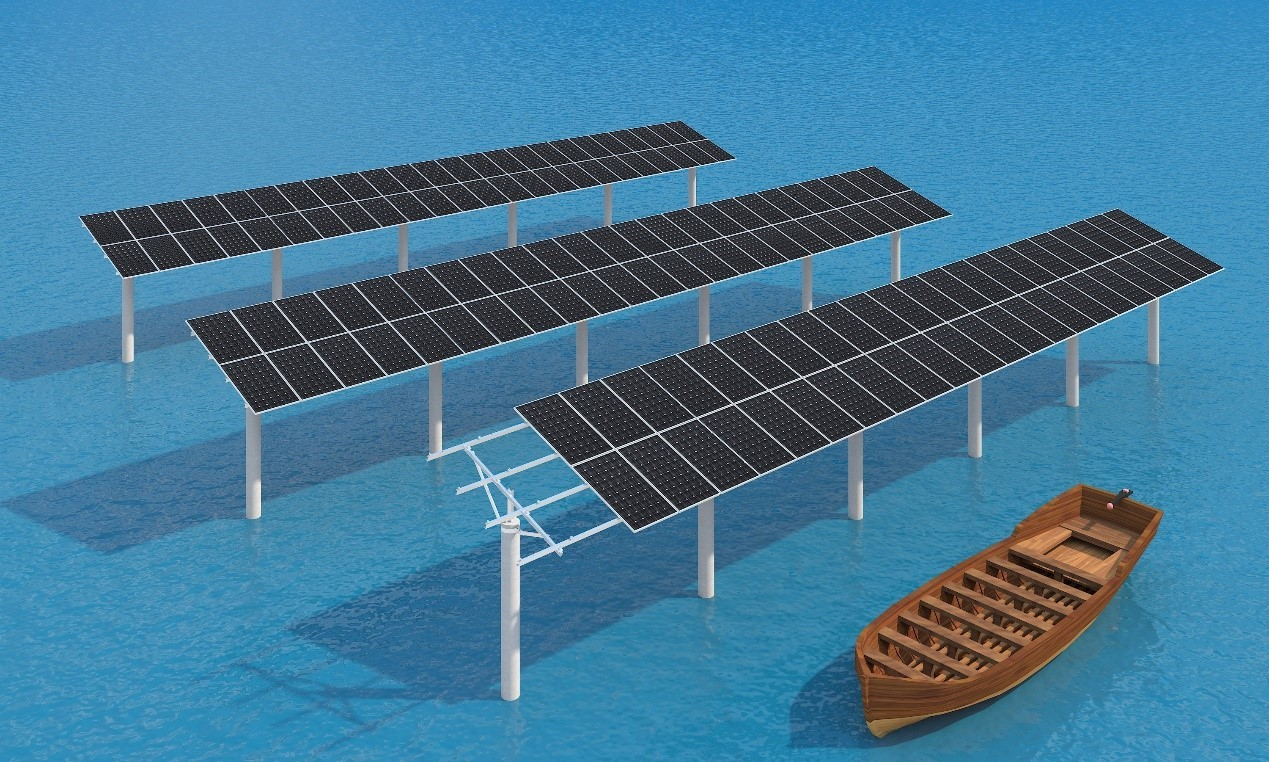With the persistent growth in demand for solar energy, various forms of photovoltaic application modes are becoming widely adopted. In regions with limited land resources, the construction of solar power stations is gradually shifting towards mountainous and desert areas, even integrating with water surfaces to form a model known as water-based solar power stations. The integration of fishery aquaculture and solar power generation fully harnesses the solar advantages of photovoltaic systems, providing lucrative economic benefits for property owners and creating positive environmental impacts, promoting sustainable development in local green energy.
Aquatic photovoltaics refer to solar power stations built in water environments such as ponds, small lakes, and large reservoirs to address the issue of traditional solar power generation occupying significant land area. The "complementary fishing and solar power" concept involves combining fishing and aquaculture with solar power generation. A solar panel array is installed above the water surface of a fish pond, allowing fish and shrimp farming beneath the solar panel. The solar array also offers effective shading for fish farming, establishing a novel solar power generation mode of "upper power generation, lower fish farming."
Unlike ground-based power plants, aquatic solar power plants do not consume land resources and are particularly suitable for regions like the Middle East, abundant in water resources but lacking in land. Moreover, aquatic solar power plants enjoy technological advantages. Due to the cooling effect of water on solar modules, surface temperature rise and radiation from the water surface are suppressed. This leads to an overall power generation 10%-15% higher than rooftop or ground solar power generation systems under equivalent conditions, reducing solar power generation costs and enhancing efficiency.
The supporting structure of the aquatic solar power system is constructed with high-strength magnesium aluminum zinc-plated material, and the entire system surface undergoes hot-dip galvanization, ensuring robust corrosion resistance and stability. This extends the service life of the solar power generation system and reduces maintenance costs. Additionally, "complementary fishing and lighting" and other "solar power+" business models contribute to increased fishing revenue, improved power quality, and reduced power outage occurrences.
However, challenges exist in the development of complementary solar power generation between fish and light. Technical challenges include enhancing photoelectric conversion efficiency and reducing the reliability and cost of complementary solar power systems. Policy challenges involve immature policies for the application of complementary solar power generation and market-oriented pricing. Societal challenges encompass promoting fisherman services and gaining social recognition for complementary solar power generation.
In addition to China, successful complementary fishing and lighting projects are currently implemented in countries such as Europe, the United States, and Australia. These projects typically involve the installation of solar photovoltaic panels on water surfaces alongside fishing facilities like fish ponds and marine farms. For instance, the "Fisherman's Energy" project in the Netherlands is a complementary system for fishing and lighting, establishing a hybrid energy station in the North Sea comprising 6 wind turbines and a 2.5MW solar panel array. This energy station not only provides clean solar energy but also enhances the living environment for local fisheries. Similar projects, such as the "Pembrokeshire Demonstration Zone" in the UK, combine solar panels with marine aquaculture facilities to create a sustainable fishing ecosystem.
In summary, the "complementary fishing and lighting" model has emerged as a new trend and sustainable development model in the realm of solar energy. By integrating fishing with solar power generation, it promotes sustainable development, yielding significant benefits in pollution reduction and ecological preservation. This approach achieves a win-win situation for social, economic, and environmental advantages within the context of solar energy. Combining the solar and fishery industries, which consume substantial space and water resources, not only realizes three-dimensional reuse in space, saving land, but also produces environmentally friendly clean solar energy. This integration of fishing, aquaculture, and solar power generation results in a mutually integrated and complementary situation, delivering social, economic, and environmental benefits in the domain of solar energy.
If you're interested in learning more about our solar energy storage offerings, we encourage you to explore our product line. We offer a range of panels and battery that are designed for various applications and budgets, so you're sure to find the right solution for your needs.
Website:www.fgreenpv.com
Email:Info@fgreenpv.com
WhatsApp:+86 17311228539
Post time: Dec-19-2023












